Numerical Reasoning Test Practice
Numerical Reasoning Test Preparation
To prepare effectively for your numerical reasoning tests, begin by learning the basics of the key topics and understanding important terms. Once you have a solid foundation, build on it with numerical reasoning test practice to identify areas for improvement and get used to the test format. Reviewing your mistakes and adjusting your numerical reasoning test revision strategy will boost both confidence and performance.
Time management is a crucial skill tested in numerical psychometric tests, which require you to process numerical information quickly and accurately. Completing regular numerical reasoning test practice questions is essential for developing this ability.
Help yourself to do the best you can by completing our free numerical reasoning test practice questions below, or register for free to access online numerical reasoning tests.
Numerical Reasoning Test Examples
Numerical reasoning questions are usually presented in multiple choice format, with 4 answers to choose from. It can be very helpful to see, and interact with, numerical reasoning aptitude questions and answers to familiarise yourself with the style and format. Completing numerical reasoning test practice with answers before your test can help you identify potential weakness which may need addressing.
Read the following numerical reasoning sample questions below before testing yourself with the numerical reasoning test practice questions below.
Question 1
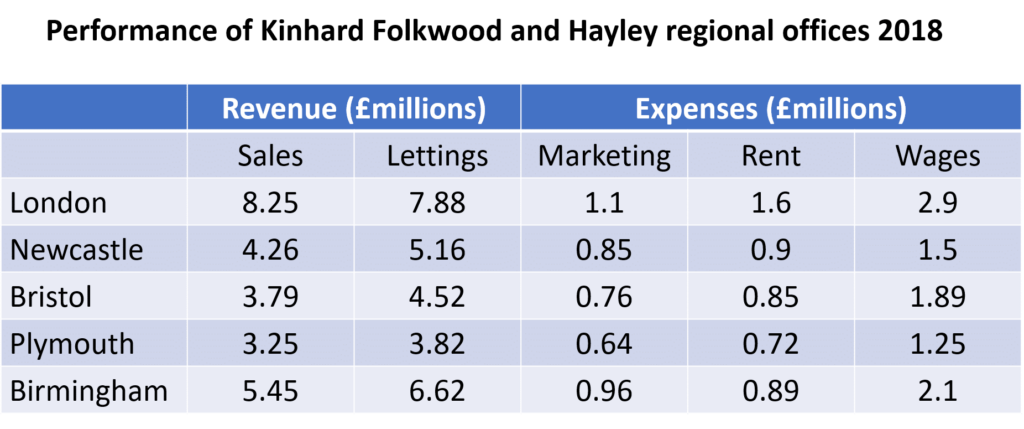
The Plymouth office’s revenue in 2019 was up by 21\% from the previous year even though expenses were up by 30\%. What was the profit made in 2019?
Solution
Step 1: The Plymouth office’s revenue in 2018 was:
£3.25\,\text{million} + £3.82\,\text{million} = £7.07\,\text{million}
Step 2: If the Plymouth office’s revenue increased by 21% the following year, then the revenue for 2019 would be:
£7.07\,\text{million} \times 1.21 = £8.5547\,\text{million}
Step 3: The Plymouth office’s expenses in 2018 were:
£0.64\,\text{million} + £0.72\,\text{million} + £1.25\,\text{million} = £2.61\,\text{million}
Step 4: If this figure increased by 30% the following year, then expenses in 2019 would be:
£2.61 \times 1.3 = £3.393\,\text{million}
Step 5: The overall profit is the total revenue minus the total expenses:
£8.5547\,\text{million} - £3.393\,\text{million} = £5.1617\,\text{million} = £5{,}161{,}700
Question 2
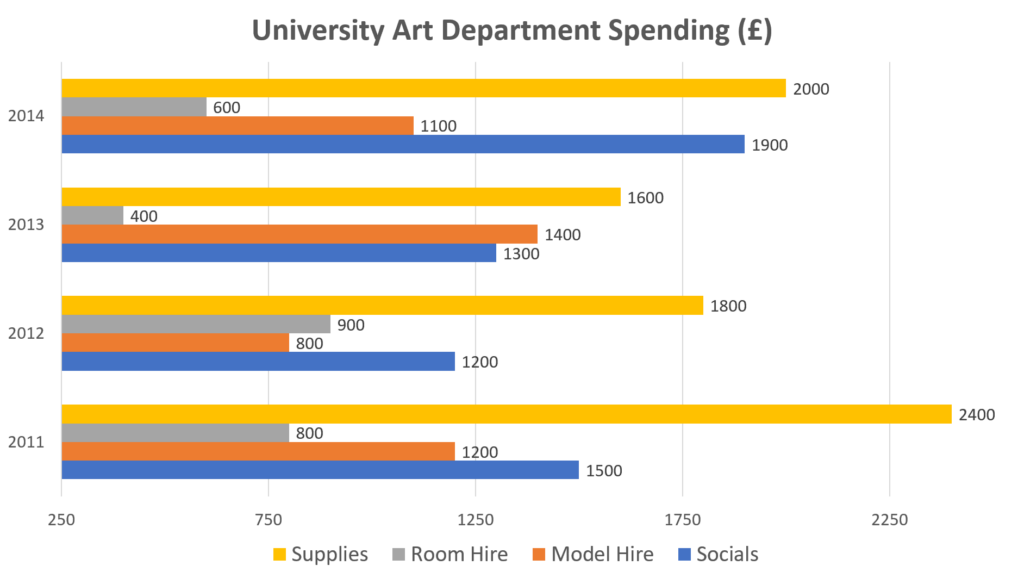
The total budget for the Art Department was £6,500 in 2011 and increased by 5\% by 2012. In neither year did the Art Department spend its full budget. What is the amount of money left unspent in this two-year period?
Solution
Step 1: In 2011, the budget was £6,500 and the Art Department spent:
£2{,}400 + 800 + 1{,}200 + 1{,}500 = £5{,}900
Step 2: Therefore, the amount unspent in 2011 was:
£6{,}500 - £5{,}900 = £600
Step 3: If the total budget for the Art Department was £6,500 and increased by 5\% for the following year, we can work out what the budget for 2012 increased to:
£6{,}500 \times 1.05 = £6{,}825
Step 4: In 2012, the Art Department spent:
£1{,}800 + £900 + £800 + £1{,}200 = £4{,}700
Step 5: Therefore, the amount unspent in 2012 was:
£6{,}825 - £4{,}700 = £2{,}125
Step 6: Therefore, the amount unspent over the two-year period was:
£2{,}125 + £600 = £2{,}725
Question 3
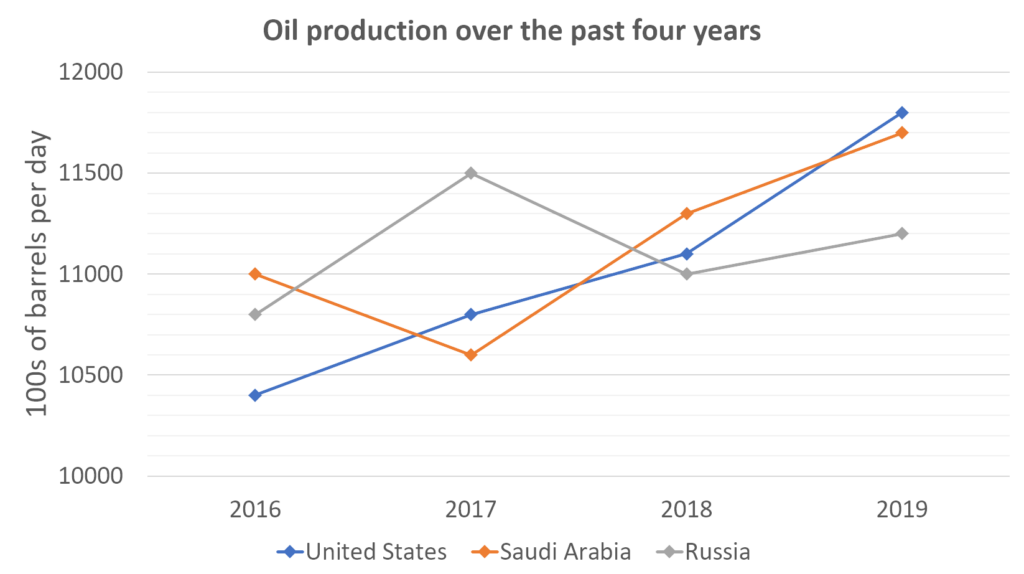
What was the percentage increase in the number of barrels of oil produced between 2016 and 2019 of the three countries combined?
Solution
Step 1: In 2016, the 3 countries produced 10,400, 10,800 and 11,000 barrels, although this is in hundreds of barrels.
However, since we are working out a percentage increase, we don’t need to multiply these numbers by 100, provided we do the same with the 2019 values.
In total, the 3 countries produced:
10{,}400 + 10{,}800 + 11{,}000 = 32{,}200 hundreds of barrels
Step 2: In 2019, the three countries produced:
11{,}700 + 11{,}800 + 11{,}200 = 34{,}700 hundreds of barrels
Step 3: As a percentage increase, this needs to be calculated as follows:
\left(34{,}700 - 32{,}200\right) \div 32{,}200 \times 100 = 7.76\%
Ready to try some numerical reasoning practice questions for yourself?
Give the below numerical reasoning test practice questions a go and then scroll down to check your answers!
Question 1
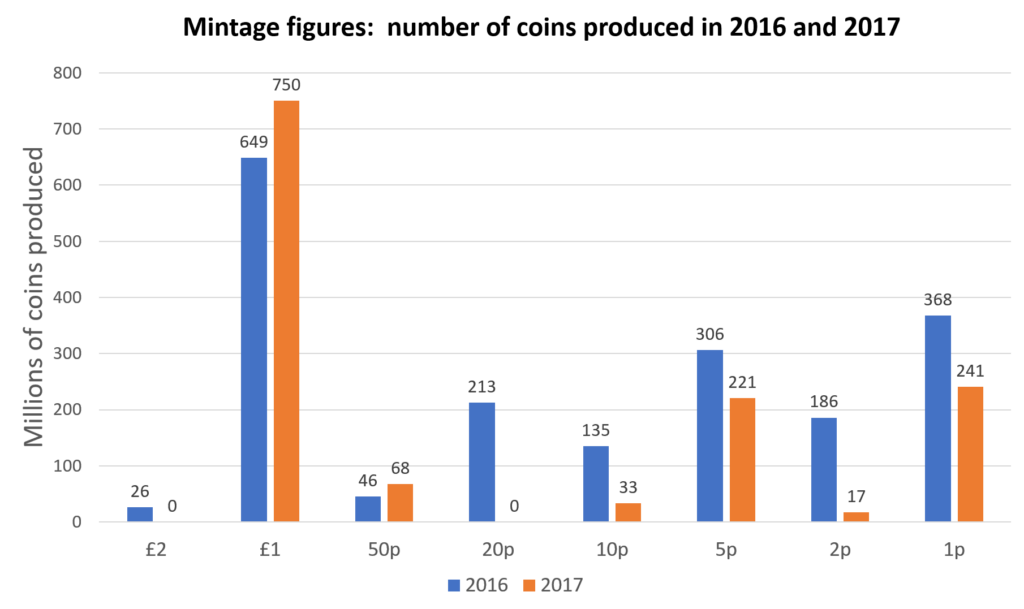
What was the difference between the total value of coins produced in 2016 and the total value of coins produced in 2017?
- £1.2 million
- £1.7 million
- £1.8 million
- £1.9 million
Question 2

To the nearest whole number, what was the percentage decrease in weight of recycled waste from 2018 to 2019 for Wales?
- 9%
- 12%
- 16%
- 24%
Question 3
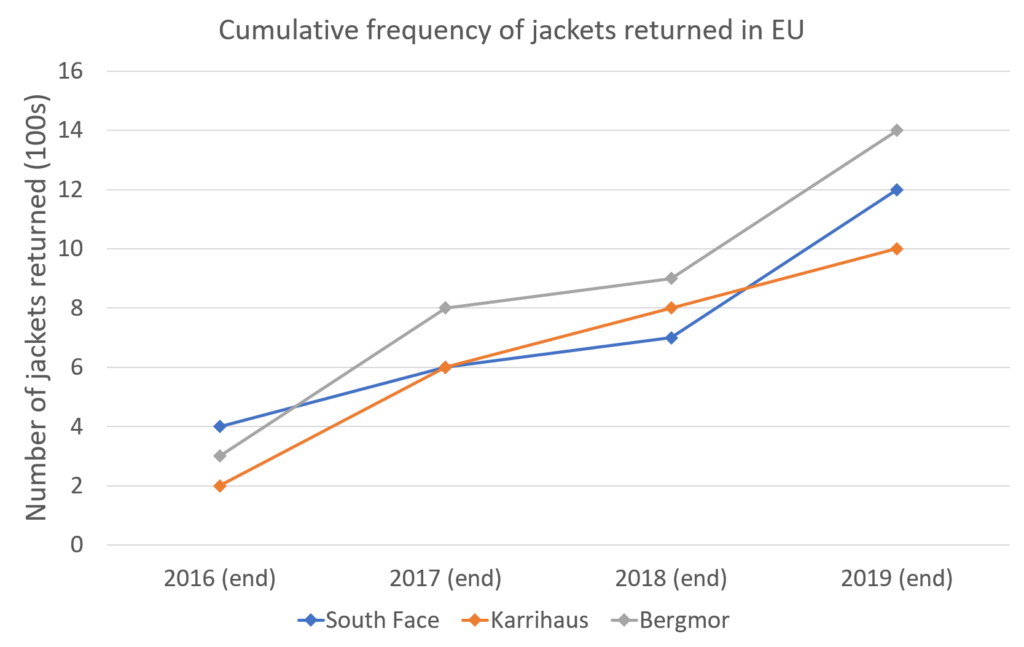
Of the three jacket companies combined, between which years was there the biggest percentage increase in the number of returned jackets?
- 2016 – 2017
- 2017 – 2018
- 2018 – 2019
- We cannot tell
Question 1 – Answer
In this question we need to use the bar chart provided to work out the total value of coins produced for 2 different years.
It is important to notice that the question is asking for the total value, not just the total number. This means that we need to take the number of each type of coin produced and multiply this by its value.
For example:
In 2016, 213,000,000 20p coins were produced, so the value of these will be:
213,000,000 x 0.2 = £42,600,000
We need to do this for each of the bars on the graph, and subtract the sum of all of the 2017 bars (orange) from the sum of all of the 2016 bars (blue).
By doing this, we find a difference of £1.2 million.
Question 2 – Answer
We first need to use the pie chart along with the percentages provided in the table to calculate the weight of the waste that was recycled in each year.
We can see from the pie chart that in 2018 Wales collected 22% of all waste collected that year. We need to calculate the weight of this.
22% x 26 million tonnes = 5.72 million tonnes
However, we can see from the table below the pie chart that Wales actually only recycled 44% of all waste that they collected. So the weight of the waste that Wales actually recycled can be calculated:
44% x 5.72 million tonnes = 2.5168 million tonnes
We can then repeat this for 2019, finding that Wales recycled 2.223 million tonnes.
We then calculate the percentage decrease from 2018 to 2019 to be 11.67% or 12% to the nearest whole number.
Question 3 – Answer
This question is much harder than it seems – notice that this is a cumulative frequency graph. The total number of jackets returned in any given year cannot be read directly from the graph; you need to deduct all previous returns from the given values.
We calculate that:
Between 2016 and 2017 jacket returns increased by 22.2%.
Between 2017 and 2018 jacket returns actually decreased.
Between 2018 and 2019 jacket returns saw a 200% increase.
Therefore, the biggest percentage increase in jacket returns was between 2018 and 2019.
Numerical Reasoning Test Practice FAQs
Should I do numerical reasoning test revision?
The best way to prepare is by doing lots of numerical reasoning test practice with answers. This will really help to familiarise yourself with the test format and build your confidence answering the style of questions that you will see in your real test. It is important to use a numerical reasoning test with solutions, as this will help you identify any areas that you may need to focus your revision on.
Where can I find numerical reasoning example questions?
We offer numerical psychometric test practice, including 420 numerical reasoning practice questions! Register for free today to give yourself the best chance of passing your numerical reasoning tests.
What is the format of numerical reasoning questions?
Numerical reasoning tests usually feature 20 questions, each with multiple choice answers for you to choose from. They test how you apply your fundamental mathematics skills to more complex scenarios and how you interpret data sets to extract important information. Take a look at our numerical reasoning test examples to get a feel for things!
Will I be timed on my numerical reasoning test?
Almost all numerical reasoning tests are taken under a time limit. It is important that you do lots of timed numerical reasoning test practice, to help develop your time management skills. We would recommend sitting a timed numerical reasoning mock test to simulate the pressure that you may feel during your real test. We offer a free 20 minute timed numerical reasoning test with solutions at the end!
What topics are tested on numerical reasoning tests?
Numerical reasoning tests assess a range of topics, including basic arithmetic, your ability to calculate percentages and ratios and how you interpret graphs and charts to work out requested values. You should familiarise yourself with common topics by reviewing numerical reasoning questions and answers with explanations.
How should I structure my numerical reasoning test preparation?
A good place to start your numerical reasoning test revision is by having a look over numerical reasoning sample questions, allowing you to see the style of question. You should then attempt some numerical reasoning test practice with answers, to help you identify any areas of your knowledge/skill that may be weaker. After this, you should complete 20 numerical reasoning practice questions under timed conditions. This will help you to assess your speed and whether you need to develop your time management skills.
